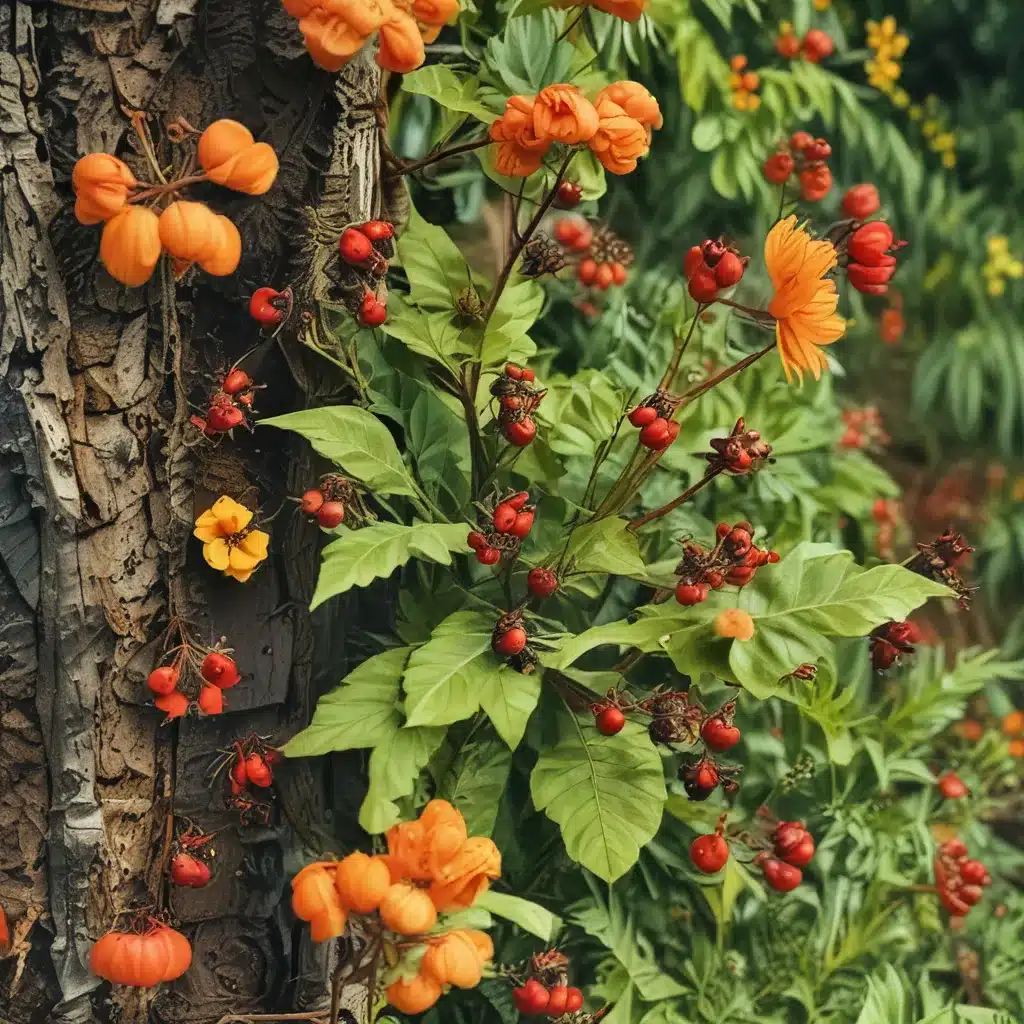
Uncovering the Secret Garden: A Journey Through Thornapple CSA’s Holistic Approach
Have you ever stepped into a lush, vibrant garden and felt an instant connection to the land? That’s the magic of Thornapple Community Supported Agriculture (CSA), where I’ve had the privilege of exploring their innovative pest management strategies firsthand.
As a long-time member of this thriving CSA, I’ve witnessed the remarkable transformation of their fields, from the initial challenges of pests and weeds to the flourishing oasis of biodiversity that exists today. It’s a story of resilience, innovation, and a deep respect for the delicate balance of nature.
Embracing Biodiversity: The Cornerstone of Thornapple’s Pest Management
When I first joined Thornapple CSA, I was struck by the sheer diversity of plants and wildlife that thrived on the farm. Instead of relying on chemical pesticides, the team at Thornapple has embraced a holistic approach that harnesses the power of biodiversity to combat pests.
According to the USDA, promoting biodiversity is a key strategy in organic and sustainable agriculture, as it helps to create a balanced ecosystem where natural predators can thrive and keep pests in check.
At Thornapple, they’ve implemented a range of techniques to nurture this biodiversity, from planting diverse cover crops to maintaining buffer zones around the fields. These practices not only support a healthy population of beneficial insects and birds but also enrich the soil, enhance water retention, and reduce the risk of erosion.
Companion Planting: A Delicate Dance of Cooperation
One of the most fascinating aspects of Thornapple’s pest management approach is their use of companion planting. By strategically arranging their crops, they’ve created a symbiotic relationship that helps to deter pests and attract beneficial insects.
For example, they’ve planted rows of marigolds and basil alongside their tomato plants. Research has shown that the strong scent of these companion plants can confuse and repel common tomato pests, such as aphids and hornworms. Meanwhile, the marigolds and basil also attract beneficial predators like ladybugs and lacewings, which feast on the pests and help to keep the population in check.
It’s a delicate dance of cooperation, where each plant plays a vital role in the overall health and balance of the ecosystem. As I wander through the rows, I’m struck by the vibrant colors and the hum of busy pollinators, all working in harmony to create a thriving, productive garden.
Introducing the Predators: Harnessing the Power of Natural Enemies
Alongside their companion planting strategies, the team at Thornapple CSA has also welcomed a diverse array of natural predators to their farm. These beneficial insects and birds are the unsung heroes of their pest management efforts, quietly and efficiently keeping the troublemakers at bay.
One of the most impressive examples is the presence of praying mantises. These remarkable creatures are voracious predators, capable of consuming a wide range of pests, from aphids and caterpillars to small rodents. Research has shown that the presence of praying mantises can reduce crop damage by up to 75%, making them a valuable asset in the fight against pests.
But the predators at Thornapple don’t stop there. The farm is also home to a thriving population of lacewings, which prey on aphids, mealybugs, and other soft-bodied pests. Ladybugs, another beneficial insect, help to control aphid populations, while spiders and birds work tirelessly to keep the fields free of unwanted visitors.
It’s a delicate balance, to be sure, but the team at Thornapple has mastered the art of coexistence, creating an environment where these natural predators can thrive and do their important work.
Embracing the Unexpected: Thornapple’s Adaptable Approach
As any farmer will tell you, the challenges of pest management are never-ending. Just when you think you’ve got it all figured out, a new threat emerges, and you have to adapt your strategies accordingly.
That’s why the team at Thornapple CSA is constantly experimenting, observing, and adjusting their approach. They’re not afraid to try new techniques, whether it’s experimenting with different cover crop mixes or introducing new predatory species to the farm.
One of the most recent innovations at Thornapple is the use of pheromone traps to monitor and manage specific pests, like the dreaded tomato hornworm. These traps use synthetic pheromones to lure the male insects, allowing the team to track population levels and target their control efforts more effectively.
As a member of the Thornapple CSA community, I’ve been amazed to witness the farm’s ability to adapt and evolve. Whether it’s responding to changing weather patterns, new pest pressures, or shifts in customer demand, the team always seems to have a creative solution up their sleeve.
A Holistic Approach to Pest Management: Lessons from Thornapple CSA
As I reflect on my time at Thornapple CSA, I’m struck by the depth of their commitment to sustainable, holistic pest management. It’s not just about eliminating pests at all costs; it’s about creating a balanced, thriving ecosystem that supports the health and well-being of the entire farm.
Through their innovative strategies, the team at Thornapple has demonstrated that it’s possible to produce abundant, high-quality crops while also protecting the environment and enhancing biodiversity. They’ve shown that by embracing nature’s inherent resilience and cooperation, we can create agricultural systems that are truly sustainable and resilient.
For me, visiting Thornapple CSA has been a transformative experience, a reminder that we can work in harmony with the land and its inhabitants to create a more abundant, healthy, and vibrant future. It’s a model that I believe can be replicated and scaled, not just for other CSAs, but for the broader agricultural community as well.
So, the next time you bite into a juicy tomato or crunch on a fresh salad from Thornapple CSA, take a moment to appreciate the incredible journey that brought that food to your plate. It’s a story of resilience, innovation, and a deep respect for the land – a true testament to the power of biodiversity in action.



